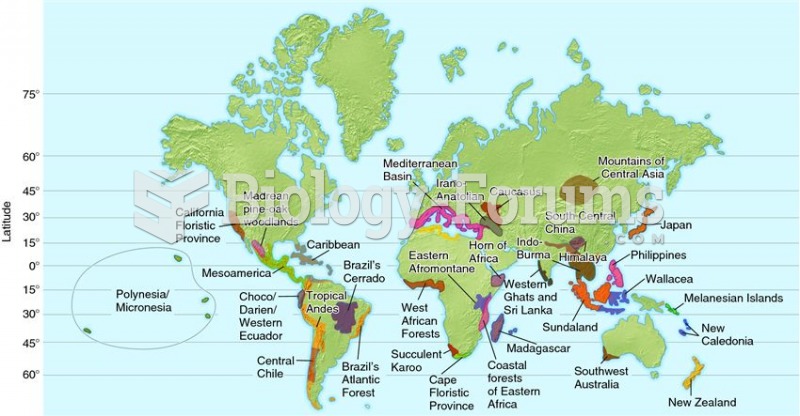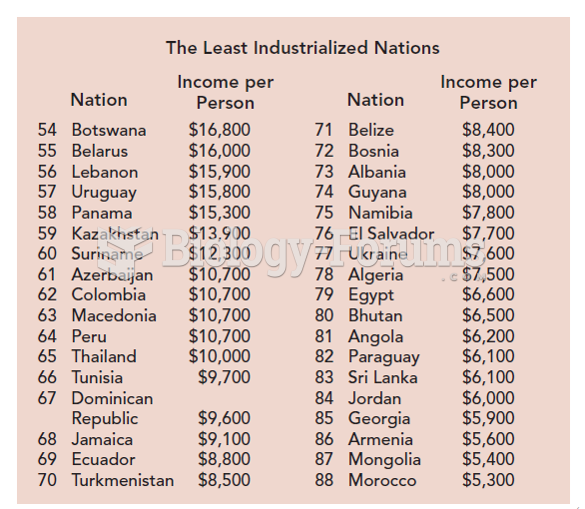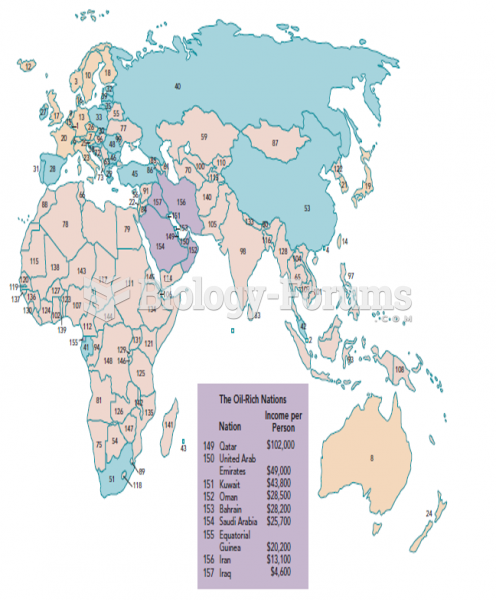|
|
|
Increased intake of vitamin D has been shown to reduce fractures up to 25% in older people.
Pope Sylvester II tried to introduce Arabic numbers into Europe between the years 999 and 1003, but their use did not catch on for a few more centuries, and Roman numerals continued to be the primary number system.
About 100 new prescription or over-the-counter drugs come into the U.S. market every year.
Bacteria have been found alive in a lake buried one half mile under ice in Antarctica.
Chronic necrotizing aspergillosis has a slowly progressive process that, unlike invasive aspergillosis, does not spread to other organ systems or the blood vessels. It most often affects middle-aged and elderly individuals, spreading to surrounding tissue in the lungs. The disease often does not respond to conventionally successful treatments, and requires individualized therapies in order to keep it from becoming life-threatening.







